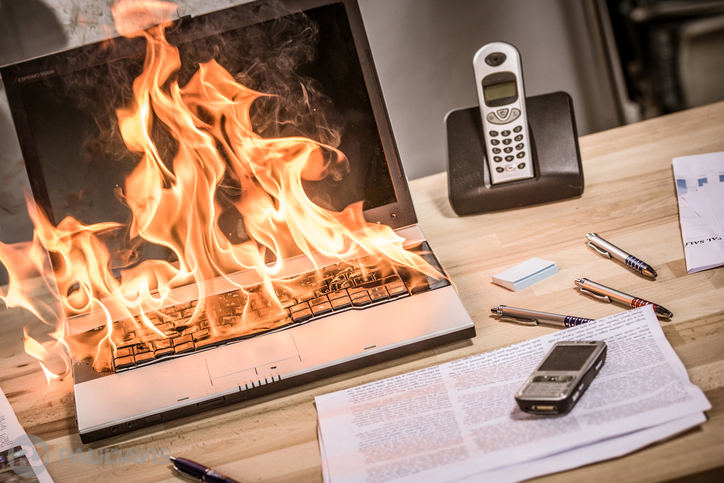
For many employees, work routines unfold in similar order at familiar times of the day. We greet colleagues on the way to desks in the morning, switch on lamps at work stations, heat food in the kitchen at lunchtime, say our goodbyes prior to heading home. It’s time to integrate some important new safety measures into typical workplace schedules. Follow along as we identify and resolve dangerous fire hazards lurking in everyday workplace schedules.
Arriving in the morning, we enter the workspace, switch on lights, plug in a space heater and start the coffee maker. Three fire hazards emerge right away. First, the space heater is an electricity-hungry device plugged into a power strip not rated for high wattage. Second, it sits next to a waste bin full of flammable paper. Third, the coffee maker lacks an automatic shutoff switch. Eliminate these hazards by plugging the heater into a wall outlet, moving it away from combustible materials and acquiring a safer model of coffeemaker. Boost safety further by unplugging the coffee maker when not in use and emptying wastebaskets daily.
Lunchtime rolls around - the third riskiest time period for dangerous workplace fires, most caused by cooking. Overheated or unattended items on the stovetop, in the microwave or in the toaster oven are top sources of dangerous flare-ups. Resolve these hazards by never leaving heating food unattended and, if possible, unplugging these appliances when not in use.
Take a break at midday and pass several more hazards. Boxes have arrived by courier and now block a safety exit. A fire door has been propped open for increased ventilation. Cigarette smoking – another leading cause of workplace fires – is taking place outside near a back door. Eradicate these hazards by designating storage areas for deliveries, keeping fire doors closed at all times and creating smoking zones equipped with safe containers for disposing of cigarette waste.
Quitting time arrives, accompanied by increased fire risk: fires occurring from dusk through dawn account for a third of all commercial fires but cause two-thirds of the total damage. Further, twenty percent of fires occur on weekends. Blazes after hours often spark from machinery, electronics or appliances that have been left on. Arson is another top cause of fires outside working hours. Boost safety before leaving: turn off and/or unplug electrical devices, shut interior doors to retard the spread of a fire and be alert for unusual activity that may preclude arson. Local fire departments can advise on common warning signs that potential arsonists may exhibit.
Despite addressing individual hazards, human error is always present in the workplace. It’s important to institute company-wide safety measures that protect all day every day. These include creating emergency plans, sharing them with emergency responders and designating one employee as a fire officer. Additionally, equip workspaces to combat fires: install alarms, extinguishers, smoke detectors, emergency lighting, sprinklers and the like, and then inspect and maintain this equipment regularly. Training and practice – evacuating the building, deploying fire extinguishers – also increase safety and make small fires less likely to devastate businesses and employees.
What if, despite your best efforts, your business experiences a fire? Paul Davis offers 24-hour, 7-day-per-week emergency call services, always answers personally and typically dispatches crews to a fire scene within 90 minutes after a call.
